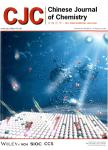Phthalimide and Naphthalimide end-Capped Diketopyrrolopyrrole for Organic Photovoltaic Applications
Phthalimide and Naphthalimide end-Capped Diketopyrrolopyrrole for Organic Photovoltaic Applications作者机构:Department of Chemistry College of Science Shanghai University 99 Shangda Road Shanghai 200444 China Printable Electronics Research Center Suzhou Institute of Nano-Tech and Nano-Bionics Chinese Academy of Sciences 398 Ruo Shui Road SEID SIP Suzhou Jiangsu 215123 China No. 2 High School Affiliated to East China Normal University Zizhu 350 Zifeng Road Minhang District Shanghai 200241 China Department of Physics and Astronomy Shanghai Jiao Tong University 800 Dongchuan Road Shanghai 200240 China
出 版 物:《Chinese Journal of Chemistry》 (中国化学(英文版))
年 卷 期:2017年第35卷第9期
页 面:1396-1404页
核心收录:
学科分类:081702[工学-化学工艺] 081704[工学-应用化学] 07[理学] 08[工学] 0817[工学-化学工程与技术] 070303[理学-有机化学] 0703[理学-化学]
主 题:diketopyrrolopyrrole phthalimide naphthalimide organic solar cells non-fullerene acceptor
摘 要:Two small molecules named PI-DPP and NI-DPP with a DPP core as the central strong acceptor unit and phthalimide/naphthalimide as the terminal weak acceptor were designed and synthesized. The effects of terminal phthalimide/naphthalimide units on the thermal behavior, optical and electrochemical properties, as well as the photovoltaic performance of these two materials were systematically studied. Cyclic voltammetry revealed that the lowest unoccupied molecular orbitals (LUMO) (- -3.6 eV) of both molecules were intermediate to common electron donor (P3HT) and acceptor (PCBM). This indicated that PI-DPP and NI-DPP may uniquely serve as electron donor when blended with PCBM, and as electron acceptor when blended with P3HT, where sufficient driving forces between DPPs and PCBM, as well as between P3HT and DPPs should be created for exciton dissociation. Using as electron donor materials, PI-DPP and NI-DPP devices exhibited low power conversion efficiencies (PCEs) of 0.90% and 0.76% by blending with PCBM, respectively. And a preliminary evaluation of the potential of the NI-DPP as electron acceptor material was carried out using P3HT as a donor material, and P3HT:NI-DPP device showed a PCE of 0.6%, with an open circuit voltage (Voc) of 0.7 V, a short circuit current density (Jsc) of 1.91 mA·cm^-2, and a fill factor (FF) of 45%.



